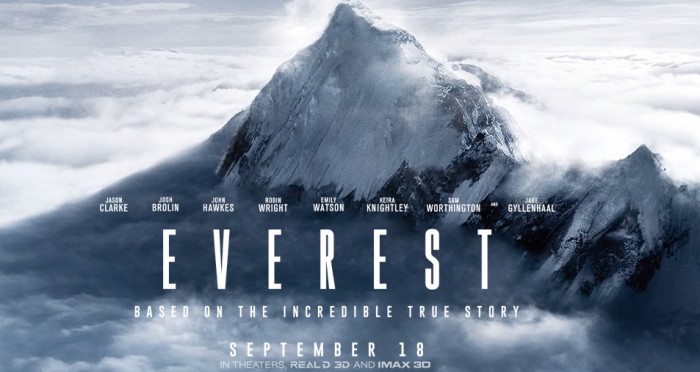‘Everest’ Fails to Climb to the Top
‘Everest’, based on the best-selling book by Jon Krakauer, hit theaters on September 18.
October 4, 2015
Climber’s POV: I read Into Thin Air several years ago, during TCAP. I felt no real connection to the climber’s in the story, and that’s all that it was to me…a story that happened a long time ago, that had no lasting affect on me.
Now, however, I’ve gotten into rock climbing. I feel a connection that I feel among the climbers, a feeling that brings us together. We have a common goal, and share a feeling that is impossible to describe to anyone that has never climbed before. As a climber, I understand why people climb the big 7 (Kilimanjaro, Mt. Elbrus, Aconcagua, Mt. McKinley, Mt. Vinson, Carstensz, and Mt. Everest).
I could describe to you, the numerous pounds of gear, the vigorous schedule of a climber, and all for just a tiny bit of something…different. However, there’s so much that goes into climbing and mountaineering that it would take me pages to go through.
After getting into climbing, I have a new obsession with Into Thin Air. I felt a connectedness to the climbers that lost their lives, as if I knew them now. It felt wrong of me to say that I was looking forward to the movie, and yet I was because I wanted the story to get out…I wanted those people to be remembered for what had happened.
So, when I went into to see this movie, I was coming with climbing perspective, into a situation in which I could understand what was happening.
Perhaps, that’s why watching this movie, I couldn’t help but spot the numerous mistakes that the climbers were making. A couple of these included the manner in which some of the people died, and the basic mistakes that were made while climbing. However, the mistake that makes me the most angry is that you can’t carry out complete sentences while standing at 29, 029 feet!
Climbing mistakes aside, I couldn’t connect to the characters that were on the screen. Often times you couldn’t tell who the camera was focused on, which brought utter confusion to the screen as to what was happening. This is perhaps why the saddest part of the actual movie was the pictures at the end that shows the actual people that the story was based on.
In the end, the movie fell short of its true storytelling potential based on the lack of character development, and falsities of climbing that it demonstrates.
.Movie Watcher’s POV:Everest fails to reach great heights
When asked why they would risk their lives to endure wheezing lungs, blackened toes, and biting cold in order to climb the world’s tallest mountain, members of Rob Hall’s team shouted, “Because it’s there!”
While this may be valid reasoning for an adventurer’s spirit, one shouldn’t apply the same ideology when seeing a movie.
Everest is based upon a real-life climbing expedition destroyed by a freak blizzard in 1996. In the early 1990’s, the commercialization of climbing Mount Everest brought a stampede of tourists paying upward of $65,000 to attempt a summit. Rob Hall (played by Jason Clarke) is the director of Adventure Consultants, who unwittingly leads an expedition of seven climbers to their fates.
Similar to a classic disaster movie, Everest is an “ensemble film” with an entire herd of characters competing for screen time. It’s a struggle to make a real connection with any one character over the course of the film, as it is all the filmmakers could do to establish a label for each one (e.i. “postal worker following his dreams”, “base camp mom”, “journalist”, “pregnant wife at home”, etc).
As a result, last-ditch efforts for sentiment, such as seeing a mental montage of family at home, or listening to (two!) teary-eyed phone calls, seemed forced and insincere. It’s insurmountable to attempt to elicit an emotion that wasn’t established from the get-go.
However, utilizing the IMAX experience attempts to bring the film to a new dimension. The director, Baltasar Kormakúr, employs wide, spinning camera views in an early scene where a climber clings for dear life to a ladder, making the screen yawn open and lure you into the ice fall. Strangely, this is one of the only scenes within the movie that could be labeled as a spectacle.
There are a frustrating lack of shots of the mountain towering in its full glory; the camera tends to linger upon the climbers trekking up the icy slopes. Without establishing this perspective, there was no sense of place. It is difficult to remember that these people are experiencing one of the harshest environments on the planet, coupled with deadly conditions.
Without perspective, there can be no empathy, no snapping of the heartstrings. We have to be on the mountain, too. When the lives of eight climbers and guides were lost, it failed to pack the punch that one would expect from a tragedy.


